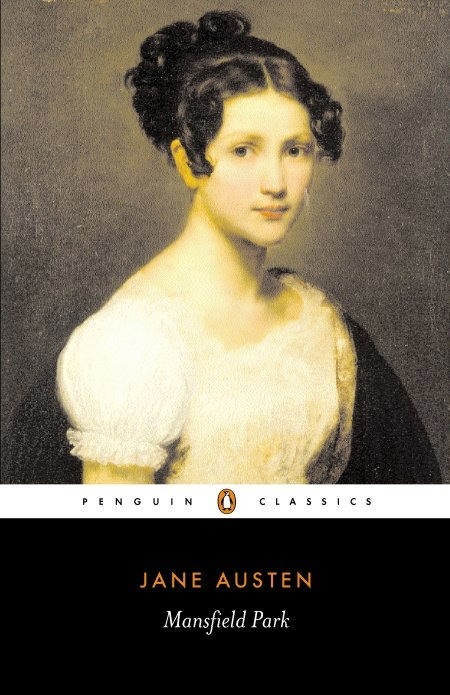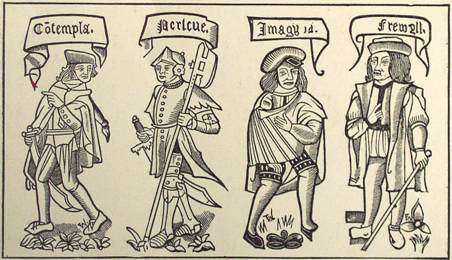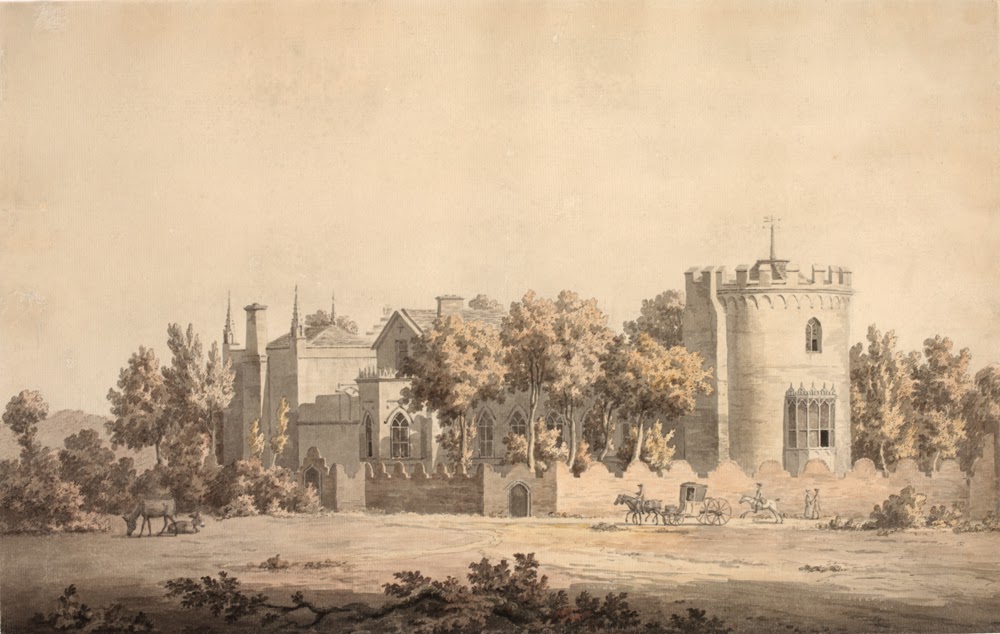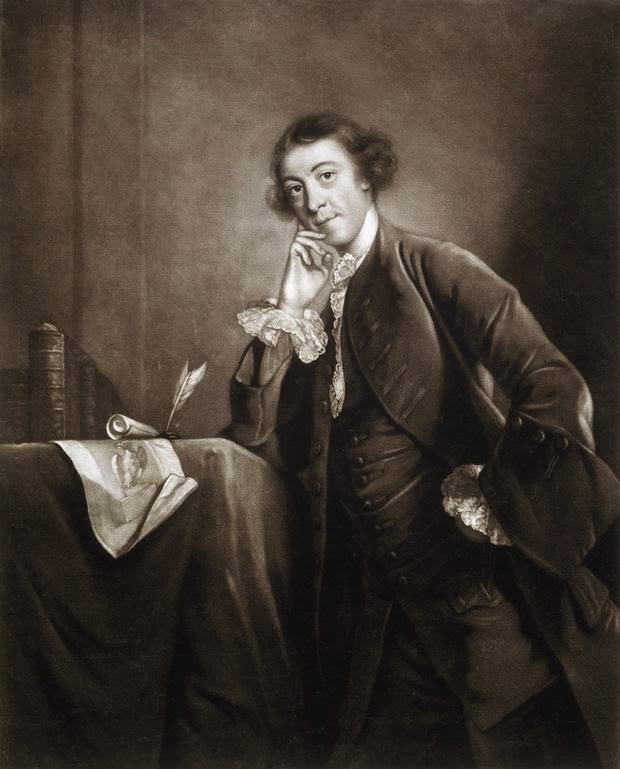This new exhibition at The British Library, “Georgians Revealed,” lasts from the 8th November 2013 until 11thMarch 2014.It has been curated by Moira Goff, head of British Collections (1501 to 1800) at The British Library.
The Exhibition Guide
I have just returned from seeing this exhibition. I came home on the tube, breathless with awe and stunned by the intensity and wide-ranging scope. It comprises an amazing collection of artefacts and documents, providing evidence of Georgian life. Arriving at the library in the Euston Road, the red brick structure that comprises the British Library is in such a location it competes with the Victorian marvel that is St Pancras Station next door and the more simplistic, Italianate Villa style that is Kings Cross Station. In some ways the library building includes aspects of both these iconic railway stations, icons of Victorian design and technology. The Victorians were the immediate inheritors of the Georgian world which they continued to develop, the style, architecture, technology, science, literature, art and societies mores. In front of the library is the massive bronze statue depicting William Blake’s, Newton, naked, seated, bent forward, his concentration entirely focussed on the pair of compasses in his hand drawing perfect angles and lines; using logic. The exhibition inside provides a far more complex view of the Georgian world from that of Blake’s depiction of Newton outside in the piazza. The exhibition gives us an oversight of man’s creativity, science, art, and society in all its forms.
Todd Longstaffe-Gowan's Georgian Garden
The exhibition is trying to spill beyond the limits of the exhibition space. Before we even get inside there is a Georgian style, formal garden of perfectly symmetrical arched hedges which you can walk through and around, placed on a smooth lawn located on the piazza in front of the library entrance. Landscape designer Todd Longstaffe-Gowan has created a Georgian garden entitled, “George Obelisk,” and which is loosely based on a design by Sir John Vanbrugh’s unexecuted entrance gate to the forecourt at Castle Howard in Yorkshire. The grass and the hedges are artificial but they create a Georgian ideal of the formal symbolic garden. As a centre piece to this garden is a tall pediment extending high in the air above the garden. On top of this thin, tall structure is positioned the head of George Ist. My first reaction was, what a strange thing to do. It immediately reminded me of those old prints depicting the Tudor and medieval London Bridge showing the severed heads of traitors stuck up on poles over the entrance to the Southwark side of London Bridge.
Once I had entered the exhibition proper the first item I came across were a series of portraits depicting the four Georges who spanned the Georgian era, 1714 to 1830. The very first picture, a cartoon by William Hogarth, depicts George Ist, in profile, holding up a small miniature portrait of Oliver Cromwell in front of his eyes for perusal. He has a stoic expression but the message is obvious. Overthrow, civil war, revolution and perhaps execution is the message. All this was a possibility in turbulent times. So the tall pediment with George Ist’s head surmounting it outside the libraries entrance contains some poignant messages. Those who guillotined the French aristocracy often held the severed heads up for display too.
George Ist examining a miniature portrait of Oliver Cromwell.
The Georgian period was marked by revolution and upheaval; The Jacobite Rising in Scotland 1746,
The American War of independence 1775 to 1782, The French Revolution 1787 to 1799,
The Napoleonic Wars 1799 to 1815, The Peterloo Massacre in Manchester in 1819, The Industrial Revolution, roughly between 1720 and 1830, and an Agricultural Revolution was continuing throughout the Georgian period. George Ist may well ponder the possibilities as portrayed in this opening picture.
A great glass cuboid, basement to roof ,containing, The Kings Library.
The British Library was founded on the book collection of King George III, who reigned from 1760-1820. As you walk into the library you are presented with a massive glass cuboid column that plummets to the basement below and reaches up through all the floors of the building to the top. It encases The King's Library created for George III. It is a soaring column of 18th century books, containing the knowledge of the world as understood when the library was created. The collection covers a vast range of subjects, from early printing and philosophy to architecture, topography and painting; from astrology and biology to agriculture and ancient languages. It included books by Jews, Muslims, Catholics and Protestants. It made me think of a sort of glass Tardis a time travelling brain or perhaps a type of Egyptian obelisk, or even a cenotaph, although this is no empty tomb. It is filled solidly with knowledge and understanding. It encapsulates the Georgian mind. The, “Georgian’s Revealed,” exhibition is a mere few metres from this extraordinary column of books. It is as though the exhibition has been created next to this monstrous Georgian ,”brain,” its power and influence overshadowing what is being done in its name.
The first thing I was handed when I presented my ticket at the entrance to the exhibition, which I had bought on the internet and printed off at home, was a copy of the exhibition guide. On the front is a scene from the ballroom at Brighton Pavilion, the Prince Regents south coast retreat from the attention of London society, overlaid by a William Hogarth sketch from the, “The Analysis of Beauty.” I unfolded the guide into one large A3 sized sheet. The front shows a diagram of the exhibition layout and a description of each part of the exhibition. The reverse side is covered by Thomas Tegg’s map of new London printed in 1830. The map picks out seven places, the site of the present British Library is number 1, Coram Fields is number 2 The Foundling Museum is number 3, Lincolns Inn fields is number 4, Sir John Soanes Museum number 5, The Hunterian Museum is 6 and Woburn Walk, finally is 7. It as though the exhibition is already telling you to get out into the streets of London and see the Georgian world there. Many Georgian houses and terraces survive. Sir John Soanes Museum is the home of the most prominent Georgian architect, the Foundling museum next to Corum Fields is where the poor children of London were taken and cared for, Lincolns Inn Fields was one of London’s finest Georgian squares, the Hunterian, was where John and William Hunter changed the face of medicine in the Georgian period and Woburn Walk was London’s first pedestrianised shopping street. Jane Austen herself wrote to Cassandra from London in 1811, “I am getting very extravagant and spending all my money.” The temptation arose to proceed no further into the exhibition and turn tail and get out and follow this enticing map. However that was to be for later. The exhibition really did beckon.
The entrance to Georgians Revealed.
When you walk into the exhibition the visitor is presented with a room introducing us to the four Georgian Kings. Their portraits are prominently displayed. Above your heads are a myriad of posters suspended from the ceiling on wires. Each poster depicts a scene from Georgian life. All subjects, themes and situations are massed above. It gives the impression straight away that there is so much, so many complex facets of the Georgian world to discover. Then there is a short wide stone staircase to the floor below where the exhibition starts.
It is interesting to note that the exhibition is designed on a simple square divided by partitions crossing the square from corner to corner like a Saint Andrews cross. Each triangular section displays one of the main themes of the exhibition, Section 1, Public places, private spaces, Section 2 Buying luxury, acquiring style, and finally section 3 Pleasures of society, virtues of culture. There is also a small room to one side that has its floor covered by an enlarged facsimile of Thomas Tegg’s new plan of London created in 1830. It occurs that this design is no whim. When you visit the Pleasures of society, section there are various types of dancing plans displayed. Examples are displayed from the book, “For the further Improvement of dancing,” by John Essex, a celebrated dancing master during the early 1700s. The simple pen and ink drawn dance designs are reflected in the simple drawn plan of the exhibition.
A stylised ballet.
The first section is titled Public places, private spaces. It is about the homes and gardens of the Georgians. Some of the most exceptional items on display are the architectural pocket guides of William Paine (1730-1794) that include simple to follow floor plans and beautiful front, side and back elevation drawings. They were sold all over Europe and North America. There are examples of Sir John Soanes work and the work of Humphrey Repton, John Nash, and the designs for Stowe by Charles Bridgeman and later William Kent. This part of the exhibition continues, from the structures and designs of houses to what was put inside them. Drawings of Chippendale furniture, Wedgewood pottery, trade cards for wall paper hangings, cabinet maker’s book prices and reading materials including a 3rd edition of Fanny Burneys, Cecilia and a 1785 issue of The Lady’s magazine.
William Kent's illustrations for a feature at Stowe.
As a teacher it was interesting to see examples of books written for children. Some of them miniatures. These covered such erudite topics as wholesome sayings, and exhortations to work hard and practice minuets. It was evident that there was a debate in Georgian times as to how children learn; was it through play or reading? Often a mixture of the two was achieved. It just shows that the way we learn doesn’t change.
The superb collection of flower prints captivated me. Explorers in the 18thcentury brought back seeds to be sold to the gentry. The wealthy wanted to develop the gardens on their grand estates and provide exotic vistas often designed to create moods. They also wanted beautiful sketches of these exotic flora. Robert John Thornton (1768-1837) tried to gain subscriptions for an ambitious project he had which was to produce artist quality prints of plants. An example in this exhibition is The Blue Egyptian water Lilly. Each print was to cost one guinea. Thornton financed the project himself. When he fell into difficulties he was able to get an act of Parliament to hold a lottery to raise finances. The Royal Botanical lottery was instigated. However it failed to raise the financial backing Thornton needed and he went bankrupt. His collection of drawings is still regarded as one of the most celebrated botanical books ever published.
One of John Thornton's excellent plant illustrations.
There is a whole section on Georgian shops. It was surprising to find that the Georgians had large department stores. Wedgewood’s Rooms and Harding, Howell &Co were vast shops if the illustrations of their interiors have anything to go by. There are examples of everything connected to shopping and much we would recognise today. There are hand bills advertising goods and shops, much larger advertising posters and numerous examples of sample cards. One particular salesman’s card I looked at had examples of his company’s lace products. Other sample cards had various pieces of silk, muslin and cotton swatches showing examples of the colours and designs a lady could buy.
There is a magnificent drawing showing the length of Kensington High Street with each individual shop illustrated in detail. An aerial view is drawn below the head on view. One pair of drawings particularly took my attention. One showed Smithfield Market that is located just to the north west corner of the old city near the Barbican. It is an aerial view, perhaps drawn from a rooftop nearby but more probably from the artists imagination. It shows a crowded area full of penned cattle. However it was the Covent Garden market scene that really captured my attention. It shows Indigo Jones elegant market place dominated by St Paul’s church. The scene looks chaotic, stalls, people and fruit and vegetables, carts and horses. You can imagine the noise of shouting, calling, the clatter of horses and also the smells, human, animal and vegetable must have been pungent and sharp on the nose.
And then I focussed my look to the left of the print and towards the rear of the picture and there indeed, to one side of this mass of commercial activity is Henrietta Street and number 10, where Henry Austen lived and had his bank and where Jane, his sister stayed. Sometimes we forget that Jane Austen lived in London amongst mayhem, the dregs of humanity, prostitutes, hauliers, servants out shopping for their masters, horses and the ordure lying in the streets and smells that she must have smelled and the noise she must have had to endure. She only mentions in her letters the genteel friends who visited her and Henry in Henrietta Street . However she joked about London having an adverse effect on her in a bawdy turn of mind writing to Cassandra.
Inigo Jones's Covent Garden. Henrietta Street is on the left towards the back.
To Cassandra Austen
Cork Street Tuesday 23rd August 1796
“My dear Cassandra, Here I am once more in this Scene of Dissipation & vice, and I begin already to find my Morals corrupted_”
Looking at the picture of Covent Garden and knowing where Henry’s bank was. It begins to become evident who might have banked at Henry’s bank. All of humanity is there, seething about like some human cauldron. Jane could well have eaten food purchased from the interest on investments from prostitution. A thought anyway.
The clothing fashion plates on display are wonderful but my favourite part of this section depicting Georgian fashion were a man’s red shoes. A pair of bright red shoes with cream coloured laces and silk lined interiors, tapered towards the toes that nearly reach a point stand out vividly from the glass case they are displayed in. They look soft in texture and were probably comfortable but perhaps not the best design for toes.
A pair of red Georgian gentleman's shoes.
Theatre and celebrity culture is thoroughly provided for. Drawings and paintings of theatres, portraits of actors and actresses such as Sarah Siddons and Dorothy Jordan, theatre bills and posters, catalogues, theatre inventories and music sheets. Highway robbers, such as Jack Shepherd and James MaCleane and courtesans like Fanny Murray became celebrities too. This material provides evidence for a good debate about celebrity culture and has it changed much since Georgian times.
The Theatre Royal Drury Lane.
Museums and galleries were becoming accessible to the public. Leisure and pleasure was important to the middle classes who could afford these sorts of things now. The pleasure gardens at Vauxhall are mentioned and Ranelagh, which was seen as a more upmarket version pleasure gorunds. The one that caught my attention was Bagnigge Wells Gardens. Bagnigge was located near the site of The British Library and I think because of this it got more attention in this exhibition than the other perhaps more famous gardens. There were many posters and drawings of the pleasures on offer there. The point that was got across was that these gardens provided for the general public an experience that only the gentry and the rich could have experienced in the past within the confines of their own landscaped estates. The point is made that all the world could meet in these places, the beggar, the prostitute, the shopkeeper , wealthy merchants, the gentry, the aristocracy and in the case of Vauxhall Gardens, even the monarchy. These new pleasure gardens were a leveller of society. They were places to see and be seen. Gossip would start, people would talk about who they had seen and with whom and this news might get into broad sheets sold on the streets. People could make a name for themselves in these pleasure gardens. Assembly Rooms were also being built in most towns where the local residents could attend balls and meet others strangers included.
Bagnigge Wells Gardens
The coffee houses of London and their importance to the development of the Georgian world of science, literature, banking and insurance is dealt with. Sports were developed along more organised principles in Georgian times. The rules for playing skittles and the rules for cricket are there to see. A hand bill showing the runners at Nottingham races during the month of August 1781 list the horses. Cock fighting and pugilism, stagecoach travel and tourism, spa towns and seaside resorts, European travel and travel to the wild and beautiful places of Britain, The Highlands of Scotland, the Lakes and the Welsh mountains; the Georgian period did indeed see the development of things that are now part of our own world and society.
Amanda Vickery writing in the Guardian on the 25th October explains,
“The Georgians revealed by the exhibition are elite and middling. The culture and consumerism of the polite predominates, while royalty, religion and the history of ideas, politics and protest, work and industrialisation are underplayed as themes. Nevertheless, that still leaves plenty of meat on which to chew.”
It is true that the exhibition does not obviously portray the lives of the poor and the working class; political unrest or the lives of those in industrial towns. These are more alluded to than shown. Shops must have had shop assistants, and the lace shops must have had workers working their looms. The working classes would have attended the rougher entertainments, boxing and pantomime. But Amanda Vickery is absolutely right, this exhibition is aimed at the middle classes who were becoming wealthier during the Georgian times.
She goes on to write,
“The exhibition wants to recommend the Georgians to a new public by stressing the recognisability of the age, from its coffee shops to its celebrity news. But make no mistake, the printing press is the real star of the show.”
Well yes, this exhibition is situated in the British Library whose season for existing is the written word. They were bound to have this emphasise. I should imagine an Industrial Museum in Preston would have an entirely different set of artefacts to tell another aspect of Georgian life..
Finally, there is a small part of the exhibition which is to one side of the four main themed areas. The floor of this cramped area is covered by an enlarged version of Thomas Tregg’s map of London printed in 1830. When I walked in I was met with the sight of a sober looking gentleman, middle aged, walking steadily and slowly along the winding course of the Thames. I smiled and looked nonchalantly at some of the prints on the walls depicting Georgian London Streets. The gentlemen reminded me immediately of children I have watched, in various schools I have taught in, following the sinuous twisting of a painted snake on the school playground or playing hop scotch. I hope he was getting as much fun walking the Thames as the children did walking the snake.
Thomas Tegg's map of London.
The map reminded me of my first thoughts when I was handed the exhibition guide. It occurred to me that I really must begin on the, “Georgians revealed walking tour,” delineated in the guide. And so I did. I had to get back to Waterloo Station for the local train to Wimbledon so I decided to stop by the seven places highlighted on Tregg’s map. The only place I had not visited before was the Foundling Museum.
I have walked past Coram Fields on occasions to get to Russell Square but never stopped to explore the park or the Foundling Museum. I have been to Sir John Soanes Museum a few times so I knew that well. I walked along Burton Crescent which is next to Woburn Walk and enjoyed the Georgian terraced crescent which is a little like a smaller version of The Royal Crescent in Bath. Georgian terrace houses are easy to recognise when you are used to them. Their structure is dictated by the social hierarchy and designed to create a safe environment in the society of the day.This exhibition is rich and complex and full of wonderful things. I could easily pay another visit there. I might do that after Christmas, before it ends.
Corum Fields where the Foundling Hospital was originally situated.
Burton Crescent near Woburn Place. Examples of fine Georgian town houses.









































































